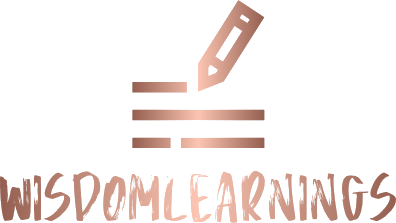Table of Contents
Technology has profoundly transformed the landscape of education, reshaping how students, educators, and institutions approach learning and teaching. E-learning, in particular, has emerged as a key driver of this transformation, offering innovative ways to deliver content, facilitate collaboration, and assess performance. Beyond e-learning, technology continues to influence education through advancements in digital tools, platforms, and methodologies. This article explores the impact of technology on education, focusing on e-learning and its broader implications for the future of learning.

1. The Rise of E-Learning
1.1. Accessibility and Flexibility
E-learning, or electronic learning, refers to the use of digital platforms and tools to deliver educational content and facilitate learning outside of traditional classroom settings. One of the most significant benefits of e-learning is its accessibility and flexibility. Students can access course materials, participate in discussions, and complete assignments from anywhere with an internet connection, breaking down geographical barriers and allowing for personalized learning experiences.
This flexibility is particularly valuable for non-traditional students, such as working professionals, parents, and individuals with disabilities. E-learning platforms enable these learners to balance their educational pursuits with other responsibilities, making education more inclusive and accommodating diverse needs.
1.2. Diverse Learning Resources
E-learning platforms offer a wealth of diverse learning resources, including videos, interactive simulations, quizzes, and discussion forums. This variety caters to different learning styles and preferences, allowing students to engage with content in ways that best suit their individual needs.
For instance, visual learners can benefit from instructional videos and infographics, while auditory learners may prefer podcasts and narrated lectures. Interactive simulations and gamified learning experiences enhance engagement and understanding by providing hands-on, experiential learning opportunities.

1.3. Cost-Effectiveness
E-learning can be more cost-effective compared to traditional education methods. Digital resources eliminate the need for physical textbooks, and online courses often have lower tuition fees than in-person classes. Additionally, e-learning reduces costs related to commuting, accommodation, and other expenses associated with attending physical institutions.
The cost-effectiveness of e-learning makes education more affordable and accessible, especially for individuals in developing regions or those with limited financial resources.
2. Technological Advancements in Education
2.1. Artificial Intelligence and Adaptive Learning
Artificial Intelligence (AI) is playing a transformative role in education by enabling adaptive learning technologies. AI-driven platforms can analyze student performance data and adjust the difficulty and pace of content to match individual learning needs.
Adaptive learning systems provide personalized feedback and recommendations, helping students to focus on areas where they need improvement and progress at their own pace. This individualized approach enhances learning outcomes and supports students in achieving their academic goals.
2.2. Virtual and Augmented Reality
Virtual Reality (VR) and Augmented Reality (AR) technologies are creating immersive learning experiences that enhance engagement and comprehension. VR allows students to explore simulated environments and scenarios, such as historical events, scientific phenomena, or architectural designs, providing experiential learning opportunities that are difficult to replicate in traditional classrooms.
AR, on the other hand, overlays digital information onto the physical world, offering interactive learning experiences that blend the virtual and real. For example, AR applications can bring 3D models of anatomical structures or historical artifacts into the classroom, enriching the learning experience.

2.3. Collaboration and Communication Tools
Technology has also transformed collaboration and communication in education. Online platforms and tools, such as video conferencing, collaborative document editing, and discussion boards, facilitate interaction between students and educators, regardless of their physical location.
These tools enable group projects, peer reviews, and real-time feedback, fostering a collaborative learning environment. Students can work together on assignments, participate in virtual study groups, and engage in discussions with their peers and instructors, enhancing their learning experience and developing essential teamwork skills.
3. Challenges and Considerations
3.1. Digital Divide
While technology has expanded access to education, it has also highlighted the issue of the digital divide. Not all students have equal access to technology and reliable internet connections, which can create disparities in educational opportunities.
Addressing the digital divide requires efforts to provide equitable access to devices and internet services, as well as digital literacy training to ensure that all students can benefit from technological advancements in education.
3.2. Privacy and Security
The use of digital platforms and tools in education raises concerns about privacy and security. Student data, including personal information and academic records, must be protected from unauthorized access and misuse.
Educational institutions and technology providers must implement robust security measures and adhere to data protection regulations to safeguard student information and maintain trust in digital learning environments.
3.3. Balancing Screen Time
The increasing reliance on technology in education raises concerns about screen time and its impact on students’ health and well-being. It is essential to balance digital learning with offline activities and encourage healthy screen habits.
Educators and parents should work together to ensure that students have opportunities for physical activity, social interaction, and other non-digital experiences that support their overall development.
4. The Future of Technology in Education
The future of technology in education holds exciting possibilities for further innovation and enhancement. As technology continues to evolve, new tools and methodologies will emerge, shaping the way we learn and teach.
Future advancements may include more sophisticated AI-driven personalized learning systems, enhanced VR and AR experiences, and even more immersive and interactive digital environments. The integration of emerging technologies, such as blockchain for credentialing and data management, could also transform educational practices and institutions.
Conclusion
Technology has revolutionized education through e-learning and beyond, offering new opportunities for accessibility, flexibility, and personalized learning. Advancements in AI, VR, AR, and collaboration tools are further enhancing the educational experience and reshaping traditional teaching methods. However, challenges such as the digital divide, privacy concerns, and screen time must be addressed to ensure equitable and effective use of technology in education. As we look to the future, continued innovation and thoughtful implementation of technology will play a crucial role in shaping the next generation of learning and teaching.


